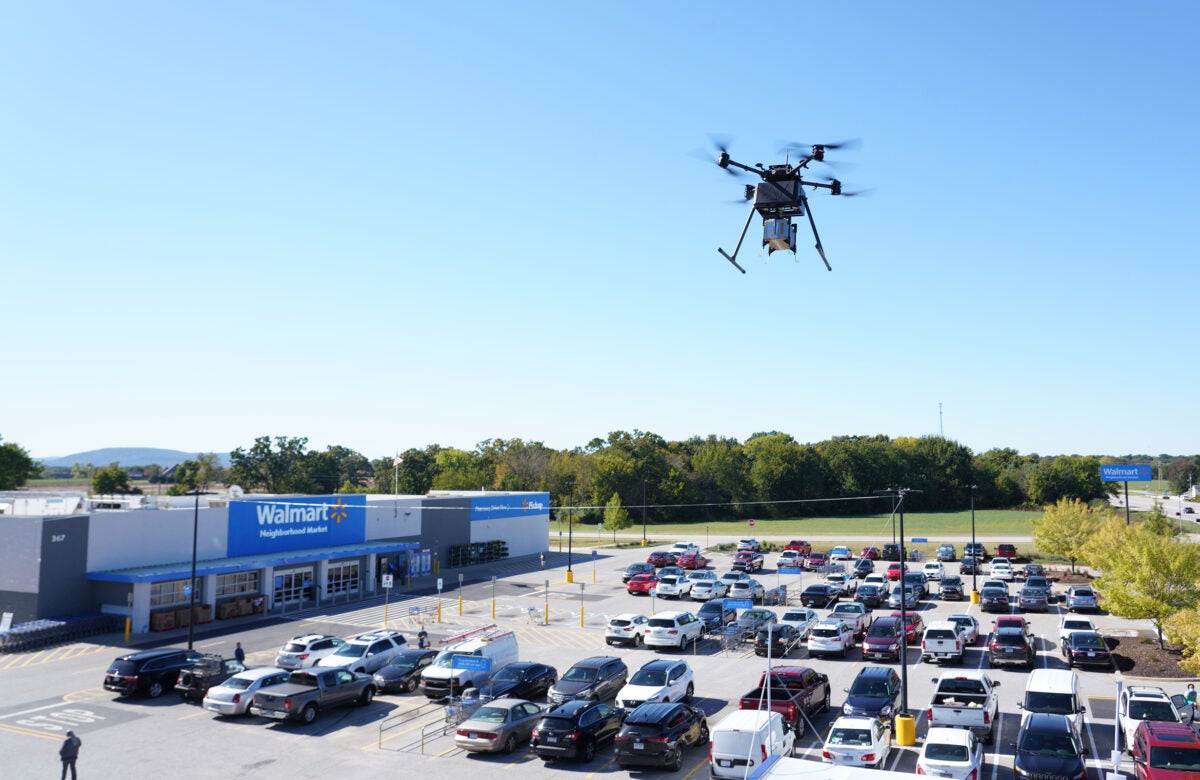Hydrogen fuel cells are steadily catching on in ground-based transportation, but could they soon be a fixture of our airspace?
That appears to be the goal for Virginia Beach-based drone delivery firm DroneUp. The Walmart partner, which powers the retailer’s largest-in-the-nation commercial drone delivery network, recently announced its plans to test hydrogen fuel cell technology from Doosan Mobility Innovation (DMI), one of the first firms to commercialize hydrogen-powered drones.
According to DroneUp, its collaboration with the South Korean firm launched in October 2022, so the two have presumably spent months optimizing the tech for uncrewed aircraft systems (UAS). Meanwhile, its drone delivery rivals—like Amazon Prime Air, Alphabet’s Wing, Flytrex, Matternet, and Zipline—have yet to commit to testing hydrogen fuel cells.
“The technology industry evolves incredibly quickly and the drone industry evolves even faster,” said John Vernon, chief technical officer of DroneUp. “It is absolutely critical we explore new technology like this and continue testing and validating how it can help us move forward. This collaboration is really interesting because it addresses two major aspects of commercial drone services, increasing flight time and reducing carbon emissions.”
As Vernon alluded to, hydrogen fuel cells like DMI’s can extend flight times: sometimes exponentially. In this case, DroneUp and DMI said the latter’s technology will enable flights between two and five hours, whereas many battery-powered models max out at around 20 minutes. So far, that’s limited DroneUp and Walmart to short, close-range deliveries.
And DMI has already backed up that assertion in previous test flights. Take, for example, a November 2019 trip that traversed 43 miles over open ocean, carrying mock vials to simulate the delivery of vaccines or test samples. The flight lasted one hour and 43 minutes, and the aircraft landed with enough hydrogen in the tank for another 30-minute trip.
The reason for those gains is twofold. For one, hydrogen fuel cells have relatively high energy density compared to electric batteries, allowing them to store energy for longer periods. But they are also quick and easy to replace, minimizing the time that would normally be spent on charging.
One caveat, though, is that hydrogen fuel cells also have low power density, which translates to a low thrust-to-weight ratio. In other words, the heavier the aircraft, the less thrust produced relative to weight, meaning larger drones may be better served by traditional fuel sources.
To Vernon’s other point, hydrogen is considered a zero-emission fuel with major environmental benefits. Although electric batteries are also a zero-emission source, they typically deteriorate much faster and require more frequent replacements. Both options are significantly less wasteful than a standard internal combustion engine.
Hydrogen fuel can be produced in a number of different ways, primarily through methods like steam reforming, electrolysis, solar power, and biological reactions. But it’s important to note that some of these processes require the use of fossil fuels, which can undo some of hydrogen’s green benefits.
The production of lithium, the main component in most electric batteries, also comes with environmental side effects like air pollution from mining operations.
So, will other drone firms follow DroneUp? Another drawback of hydrogen fuel cells is the operational costs they incur, which so far has contributed to relatively low adoption in settings like trucking. But a few other drone companies are eyeing the emerging tech.
Last month, Germany’s Wingcopter announced a partnership to bring green hydrogen to its fleet, making it one of the largest drone delivery firms in the world to set such a goal. Then there’s Israel’s Heven Drones, which in February introduced a hydrogen-powered drone capable of flying for over 90 minutes.
And while Amazon Prime Air has lots of work to do getting its drones off the ground, in 2022 it did sign a green hydrogen supply deal with Plug Power, which is building hydrogen fuel cells for small UAS models. The e-commerce giant has not said anything about bringing that technology to its drones, but the relationship could open the door to hydrogen-powered models.
With the exception of a few smaller firms, most drone companies are not yet looking at hydrogen fuel cells. It’s possible, though, that things play out the way many predict it will in trucking – a future where hydrogen and electric power coexist as zero-emission fuel sources.
